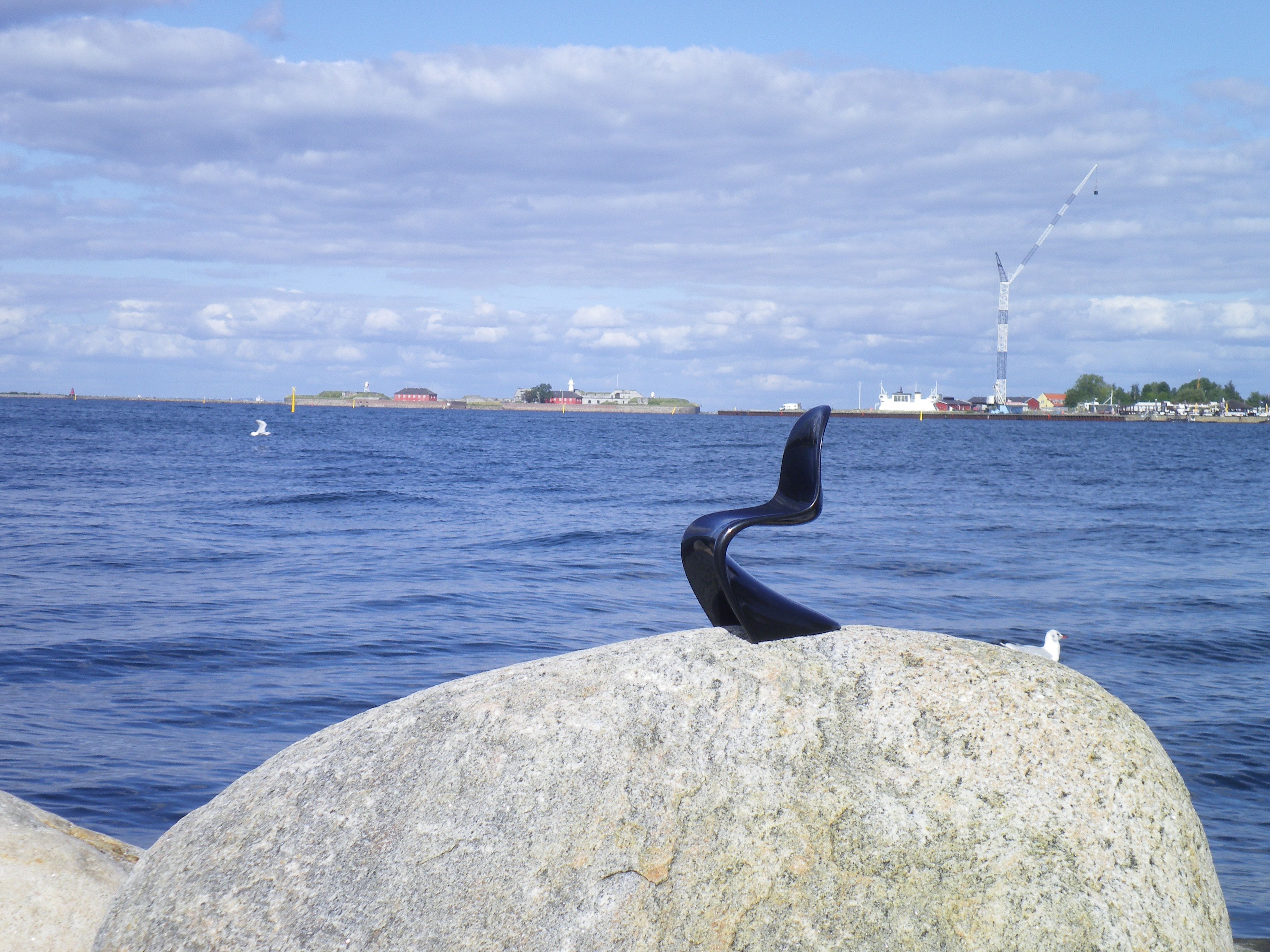Danespotting 2010 | Designer | Fritz Hansen | Producer | Product | Vitra
For one of Denmark's most celebrated designers Verner Panton spent considerably little time in Denmark; and many most of his celebrated works were realised abroad.
That said Copenhagen is full of reminders of Verner Panton, his life, his work and his passions.
And so during our brief visit to the Danish capital we took the opportunity to meet up with one his Vitra Panton Chairs for a guided tour of Verner Panton's Copenhagen.
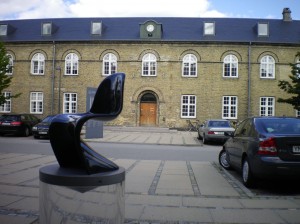
Our tour began, as did Panton's association with Copenhagen, at the "Kunstakademiets Arkitektskole" - the Architecture School of the Royal Danish Academy of Fine Arts.
Following completion of his architectural engineering studies at Odensee Techical University, the 21 year old Verner Panton enrolled in the architecture school of the Royal Danish Academy in 1947. In Copenhagen he met Tove Kemp, the stepdaughter of designer, critic and architect Poul Henningsen, and the two married in 1950. Although the marriage to Tove was only short lived, Panton's relationship with Henningsen was to be much more long-lasting.
On the one hand in Henningsen Panton found a mentor and teacher from who he could develop his light design concepts. In the course of his carear Verner Panton not only designed some 60 lamps, but light and shadow played important roles in his various installations and room design projects.
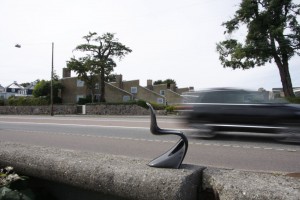
And secondly, through Henningsen Panton was introduced to Arne Jacobsen and in 1950 began working in Jacobsen's studio, located in the cellar of Jacobsen's house at 413 Strandvejen.
Through observing the studied and uncompromising manner in which Jacobsen worked not only did Panton's interest in furniture design develop, but he also acquired a preference for experimenting with materials and taking risks with his designs - characteristics that were to be critical in the development of his approach to design.
In addition, while working for Arne Jacobsen Verner Panton made his first contact with Fritz Hansen.
But everything in turn.
In 1951 Jacobsen was commissioned to design a canteen chair as part of a project with the company Novo, and from this project arose a cooperation with Fritz Hansen to develop a multi-purpose chair from bent plywood. And Verner Panton was assigned the task of making the initial prototypes for possible designs. The final result was to be the 3100, Myren or Ant Chair - and although the final design is largely Jacobsen, the experience of working on the Ant Chair helped shape Pantons future work.
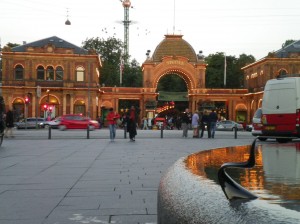
Panton graduated in 1951, left Jacobsen in 1952 and established his own studio. Initially he spent his time undertaking extended European tours in his VW camper van; tours during which in addition to designing he also made contact with designers, producers and retailers.
In 1955 Pantons' relationship to Fritz Hansen developed further when they brought the very first commercial Verner Panton product onto the market; the Bachelor chair, quickly followed by the "Tivoli Chair" - so named because it was initially developed as part of a commission for a restaurant in Tivoli Gardens, Copenhagen.
In the late 1950s Panton left Denmark, living and working in Norway, Teneriffe and subsequently Basel, from where he developed his Panton Chair in collaboration with Vitra.
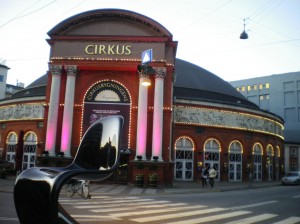
Settling in Basel Verner Panton's relationship with Copenhagen became increasingly limited to visits, either private or to receive numerous prizes and honours. In 1984, however, Verner Panton was commissioned to develop a new colour scheme for the Cirkusbygningen - a theater and cabaret venue near Tivoli Gardens - a project that he developed in his own inimitable style.
In the 1990s Verner Panton shared his time increasingly between his Villa near Basel and his flat in Copenhagen. Verner Panton died in Copenhagen on September the 5th 1998, aged 72 years.
Strolling through Copenhagen with Vitra Panton Chair and listening to its Verner Panton anecdotes we couldn't help thinking what a shame it is that the city doesn't do more to honour the likes of Panton or Jacobsen - or at least make the sites of their work and inspiration more visible and accessible.
